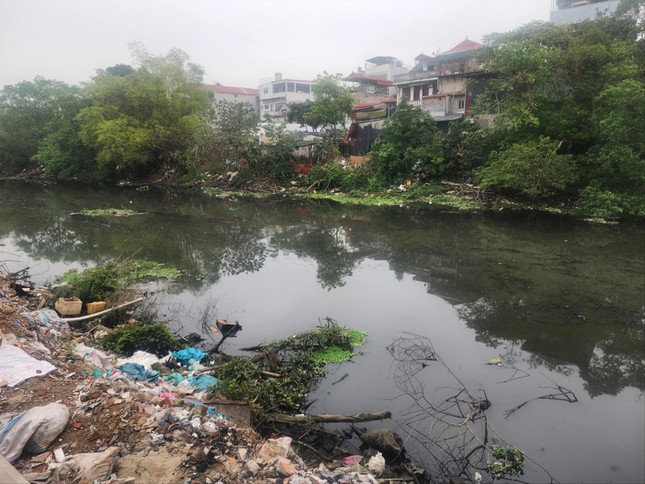Evaluating the Impact of Building 2 Large Dams on the Red River

The Ministry of Agriculture and Rural Development recently announced plans to propose to the Hanoi People’s Committee the construction of two large dams on the Red River. According to the proposal, the ministry intends to build two dams in the Xuan Quan area (Van Giang – Hung Yen) and the Long Tuu culvert area (Dong Anh – Hanoi), with expected construction starting between 2026 and 2030.
Positive Reception from Local Residents
Upon hearing the news, many residents living along the Day and Nhuệ rivers expressed their support for the plan. Currently considered dead rivers in the capital city, these water bodies significantly impact the lives of local residents. Mrs. Nguyen Thi Hien, a resident of Phu Dien Ward, Bac Tu Liem District, stated, “We support any solution that reduces river pollution. However, in addition to redirecting water to the rivers, the authorities should also address the issue of domestic and industrial wastewater discharge, which is the main cause of pollution.”
The Importance of Dam Construction
Representatives from the Hanoi Department of Agriculture and Rural Development emphasized the urgency of constructing dams on the Red River throughout the capital city, aligning with existing master plans. They stressed the need for early implementation due to the rapid decrease in water levels in the Red River, the increasing pollution of the river system, and the lack of supplementary water sources for agricultural irrigation systems.
Balancing Practical Needs and Environmental Impact
In a dialogue with PV Tien Phong, Mr. Nguyen Quang Huan, a member of the XV National Assembly and Deputy Chairman of the Vietnam Clean Water and Environment Association, expressed support for building dams to serve agricultural production. However, Mr. Huan highlighted concerns that dam construction on the Red River could alter downstream flows, leading to saltwater intrusion similar to the Mekong Delta. He also raised potential negative implications for local farming and livestock due to the altered river dynamics. Furthermore, Mr. Huan emphasized that redirecting water from the Red River to the Nhuệ and Day rivers without effective collection of domestic and industrial wastewater would not adequately solve the pollution problem.
Comprehensive Environmental Assessment Needed
Dr. Dao Trong Tu, Head of the Vietnam River Network, shares the view that careful consideration of the environmental, landscape, and spiritual impacts of building the two dams is necessary. Regarding the goal of cleaning the Nhuệ river, Dr. Tu believes that a complete solution may not be achievable, but rather a dilution of pollutants to a certain extent, as both banks of the river continue to discharge waste directly into the water.
As plans progress for the construction of dams on the Red River, it is crucial to comprehensively evaluate the impact on the environment, local communities, and the long-term sustainability of water resources. Taking into account factors such as effective wastewater management and mitigating potential ecological disruptions will be vital in ensuring a balanced and successful implementation of the project.
To read more informative articles on finance and economics, visit Business Today.
